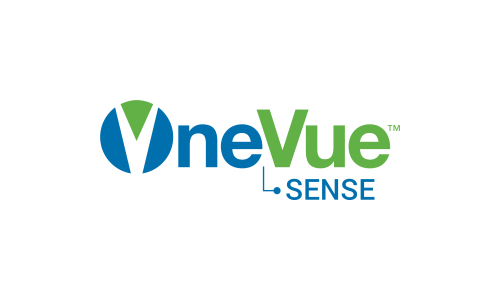Utilizing Easy-to-Install Differential Pressure Sensors During the Onset of COVID-19
Utilizing Easy-to-Install Differential Pressure Sensors During the Onset of COVID-19
In March 2020, New York City was an epicenter for the coronavirus pandemic, accounting for 5% of cases worldwide. The city’s hospitals were pushed to capacity by the sudden influx of patients with COVID-19, the disease caused by the coronavirus. Not only did hospital staff have to learn how to treat COVID-19, but they also had to alter where they normally provide care — as not to spread infection throughout the hospital.
One prominent and highly rated New York City hospital was no exception. This hospital’s officials found themselves needing to create brand new, negatively pressurized isolation rooms for COVID-19 patients. These rooms are designed to only circulate air within that room without any dispersal of air to other areas of the hospital, eliminating the chance of spreading air particles from an infected person’s room throughout the hospital. To help ensure that these rooms maintained their negative pressurization, this hospital chose to utilize OneVue Sense™ differential pressure sensors.
“We needed a quick and easy way to monitor differential pressure in these isolation rooms to keep our patients and staff safe,” a building operations manager said. “Primex checked those boxes and more.”
Quick Integration, Proper Isolation
With time of the essence, this hospital could not afford to wait for contractors to drop data lines throughout the hospital, install sensors in each room, and integrate monitoring into the hospital’s building management system. Instead, they ordered over 100 battery-powered Primex differential sensors for their new isolation rooms. Primex staff worked quickly and remotely with the Hospital’s IT department to ensure a smooth install within the hospital’s existing Wi-Fi network and provide an overview of the sensors’ monitoring capabilities.
“When building these isolation rooms, there were so many moving parts,” the manager said. “When we looked at the one component of monitoring differential pressure, it sounded simple, but it really wasn’t — until we found Primex. We took the sensors out of the box, popped some batteries in, mounted them on the wall of each room, and we were off and running.”
Each Primex OneVue Sense differential pressure sensor can automatically record and push air pressure data readings to any computer or mobile device operating with OneVue Monitor™ software. With a sensor now in each of the hospital’s new isolation rooms, facility staff could now monitor each room’s air pressure measurement in one place. If a room’s air pressure fell out of a specified, negative range, facility staff would receive an alert on their device and could send someone to check that room to see if its door was left open or its ventilation system was not working properly.
Saves Time, Prevents Infection
Along with the mobile alert feature, each sensor has an alarm that would sound or be displayed if that room’s air pressure fell out of a specified range. These local alarms made it easy for clinical staff to notice an issue and notify the central engineering team to come check out the room. They also have allowed clinical staff to focus more on patient care and less on air pressure.
“Clinicians had some peace of mind knowing that they could see the pressurization numbers on the sensor,” the manager said. “Facility staff also felt reassurance knowing that these sensors recorded NIST standard-traceable, reliable, and correct data. Plus, we weren’t sending building mechanics out to active COVID-19 wards to take readings every day. We were able to redeploy staff to fix other more critical issues.”
In addition to having provided peace of mind and improved efficiency among staff, most importantly, Primex OneVue Sense differential pressure sensors have helped to prevent a widespread infection event throughout the hospital. Without these sensors in place and the proactive alerts that they provide, a COVID-19 patient’s room could have lost negative pressurization and unknowingly increased the chance of spreading infected air particles to adjacent areas within the hospital.
“Losing pressurization without knowing and leaking positively or neutrally pressurized air into hallways for an extended period of time would really be the worst-case scenario,” the manager said. “With Primex sensors and the ability to continuously monitor, if any room lost pressurization, we would be able to correct it immediately to ensure the safety of our patients, visitors, and staff. That is the ultimate goal.”
Simple Repurposing, Extensive Monitoring
As healthcare providers have learned more about treating COVID-19 since the onset of the pandemic, the widespread use of isolation rooms inside this hospital has decreased. Many of the newly built isolation rooms have been turned back into standard patient rooms. Building engineers at the hospital are looking into using the differential pressure sensors in other areas of the facility and how other environmental monitoring solutions in the Primex OneVue Sense™ product line can help bolster safety and improve efficiencies. For example, engineers contacted Primex regarding the use of temperature monitoring sensors following an MRI machine’s overheating. No matter the type of sensor, this hospital’s building operations team appreciates the benefits of Primex products and is looking forward to expanding their environmental monitoring capabilities.
“Primex provides great customer service,” the manager said. “Despite supply chain issues across the globe in March, Primex got us these sensors as soon as possible. The central monitoring platform is easy to use, and the sensors are easy to set up and install. It’s a great product.”

Results
- A prominent and highly rated New York City hospital’s temporary isolation rooms were equipped with Primex differential pressure sensors
- OneVue web-based software provided real-time alerts to staff if room pressure exited a specified range
- Providers were given peace of mind knowing isolation rooms were correctly pressurized
- Around-the-clock monitoring helped to prevent a widespread infection event throughout the hospital
- Facility staff were gifted more time to focus on other maintenance requests